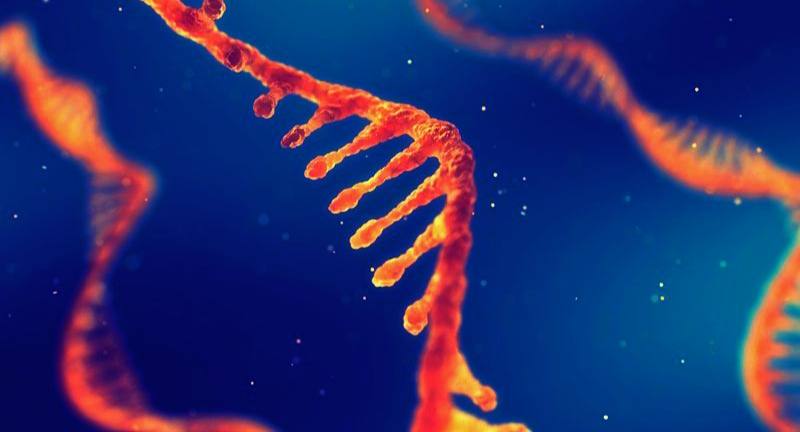RNA and its structure :-
RNA molecules are single stranded nucleic acids composed of nucleotides.
- RNA plays a major role in protein synthesis as it is involved in the transcription, and tanslation of the genetic code to produce proteins
- RNA nucleotides contain three components –
- Nitrogenous base :- It include Adenine (A), Cytosine ( C ), Guanine ( G ) and Uracil ( U ).
- Five carbon sugar :- The five carbon sugar ( pentose ) in RNA is ribose.
- Phosphate group :- It is phosphoric acid.

Fig. 1. Structure of ( a ) DNA and ( b ) RNA.
RNA molecules are polymer of nucleotides joined to one another by covalent bonds between the phosphate of one nucleotides and the sugar of another. These linkages are called phosphodiester linkages.
- Single stranded RNA is not always linear. It has the ability to fold into complex three dimensional shapes and form hairpin loops.
- Nitrogenous bases bind to one another . Adenine pairs with Uracil ( A – U ) and Guanine pairs with Cytosine ( G – C ).
Types of RNA :-
There are of three types –
- Messenger RNA ( mRNA ) :-
They carries the genetic code fron DNA in a form that can be recognized to make proteins. The coding sequence of the mRNA determines the amino acid sequence in the protein production.
- There are approximately 23000 mRNAs encoced in human genome. It is about 5 to 6% of total RNA.
2. Ribosomal RNA ( rRNA ) :–
It is the catalytic component of the ribosomes. In the cytoplasm , rRNA and protein components combine to form a nucleoprotein complex called ribosome which bind mRNA and synthesizes proteins ( also called translation ).
It is about 80% of total RNA in a cell
3. Transfer RNA ( tRNA ) :-
It is a small RNA chain of about 80 nucleotides. During translation, tRNA transfers specific amino acids that correspond to the mRNA sequence into the growing polypeptide chain at the ribosome.
It is about 10 to 15% of total RNA in a cell.
Differences between DNA and RNA :-
DNA
- DNA contains the sugar deoxyribose.
- DNA is a double stranted molecule.
- It is stable under alkline conditions
- DNA is responsible for storing and transfering genetic information.
- DNA uses the bases Adenine, Thymine, Cytosine and Guanine.
RNA
- RNA contains the sugar ribose.
- RNA is a single stranded molecule.
- It is not stable.
- It is directly code for amino acids and acts as a messenger between DNA and ribosomes to make proteins.
- RNA uses the bases Adenine, Uracil, Cytosine and Guanine.











